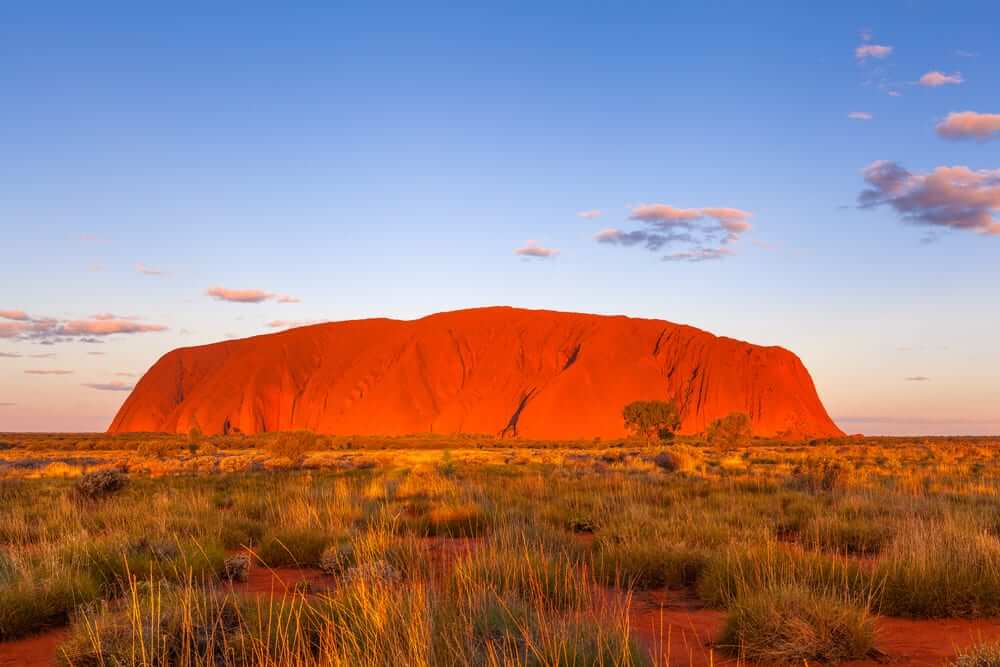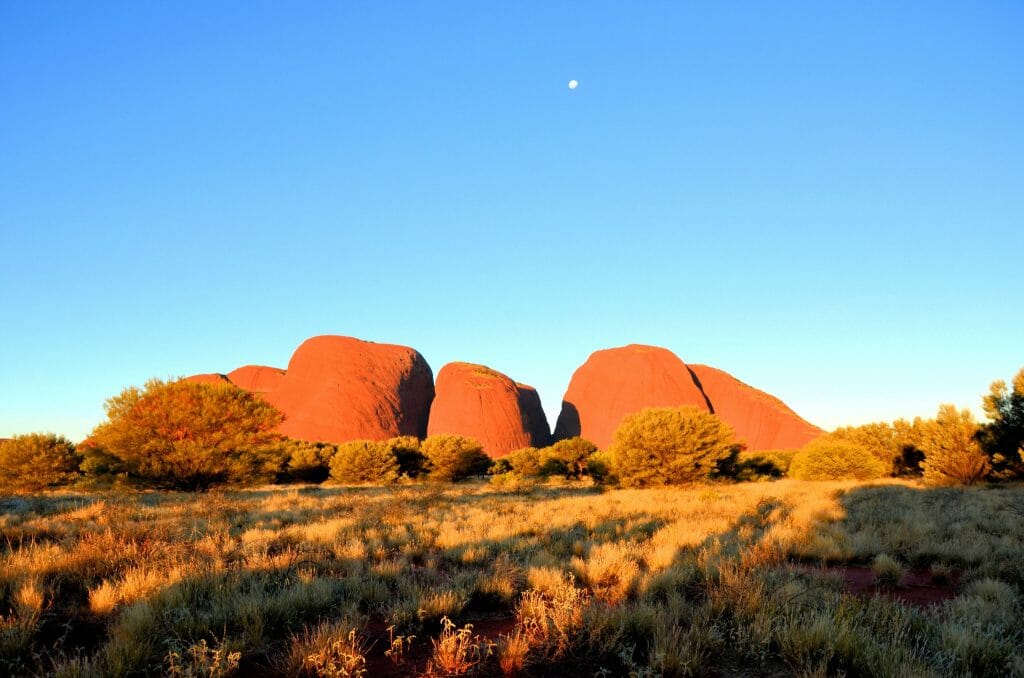Catching that first glimpse of Uluru will blow your mind. It is amazing to think that a rock so huge could sit in the middle of the desert! The best way to learn about the important site is definitely to visit Uluru-Kata Tjuta National Park and listen to the stories of local Anangu guides.
While you’re busy planning that trip, we’ve collected 14 facts about Uluru and Kata Tjuta to get you even more excited. You’ll be amazed by just how big, tall, old and special Uluru and Kata Tjuta are.

- Uluru stands taller than Eureka Tower in Melbourne. Actually, it stands taller even than the Eiffel Tower! Its peak is 348 metres above the surrounding desert.
- The circumference of Uluru is a whopping 9.4 kilometres. You can circumnavigate it on foot or by bike via several trails. The full base loop is 10.6 kilometres.
- Uluru and its surrounding rock formations are estimated to be approximately 550 million years old. That’s a lot of birthday candles!
- Some scientists estimated the weight of Uluru and came up with the teensy, weensy number of 1,425,000,000 tonnes. And that’s a lot of zeros!
- Uluru is like an iceberg because we can only see the tips of the rock slab. In fact, it continues underground for another 6 kilometres. This is one of our favourite facts.
- For a while, Uluru was known as Ayers Rock after surveyor William Goose named it in honour of Sir Henry Ayers in 1873. Uluru is the name in Anangu Pitjantjatjara.
- Kata Tjuta is made up of 36 domes which are spread over 20 kilometres, about 30 kilometres from Uluru.
- Kata Tjuta aptly means ‘many heads’ in the local Pitjantjatjara language.
- The tallest dome of Kata Tjuta rises up as high as 546 metres. It was named Mount Olga in 1872 by explorer Ernest Giles, after Queen Olga of Wurttemberg.
- There are many Pitjantjatjara legends about Kata Tjuta, including one about the snake king Wanambi who wakes from hibernation in the dry season.
- Kata Tjuta is a very sacred place especially for Anangu men. There are many parts that remain secret due to their significance. Keeping respect in mind when you visit is super important.
- Uluru-Kata Tjuta first became a national park in 1950.
- The local Aboriginal people are the Anangu of Pitjantjatjara. Anangu have been living in the area and managing the country for thousands of years. In fact, there is evidence of their inhabitancy in the region more than 30,000 years ago.
- More than 415 plant species, 21 mammals, 178 birds and 73 reptiles can be found in Uluru-Kata Tjuta National Park, so keep your eyes peeled.
You can see the Uluru-Kata Tjuta National Park on foot, by car or even by scenic flight. There are three walking trails for exploring Kata Tjuta. The most famous is the 7.4-kilometre Valley of the Winds circuit, which encompasses two lookouts and delves into Kata Tjuta itself. Alternatively, pick a short 600-metre walk to the dune viewing area or the 2.6-kilometre return Walpa Gorge Walk.

You can conquer the full 10.6-kilometre base walk encircling Uluru, or opt for one of the five other tracks, many of which have wheelchair access. Mala Walk, for instance, is a short, ranger-led route on which you can learn about Uluru-Kata Tjuta National Park, its conservation and the Anangu people.

READ MORE:
How to do Uluru and Alice Springs with kids
17 epic Aussie family road trips

